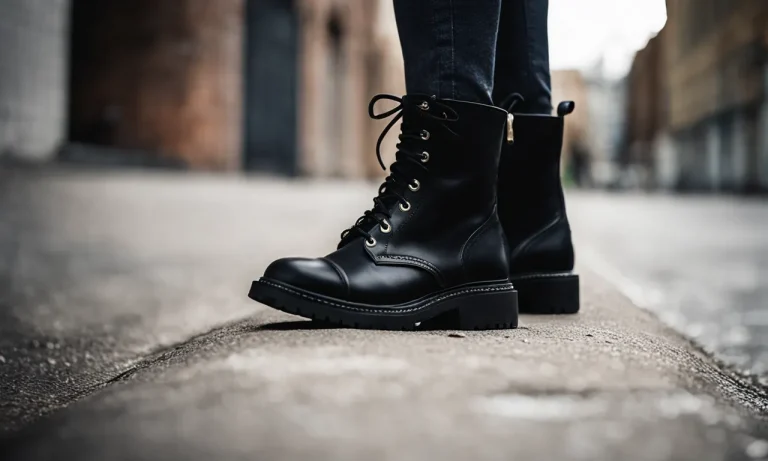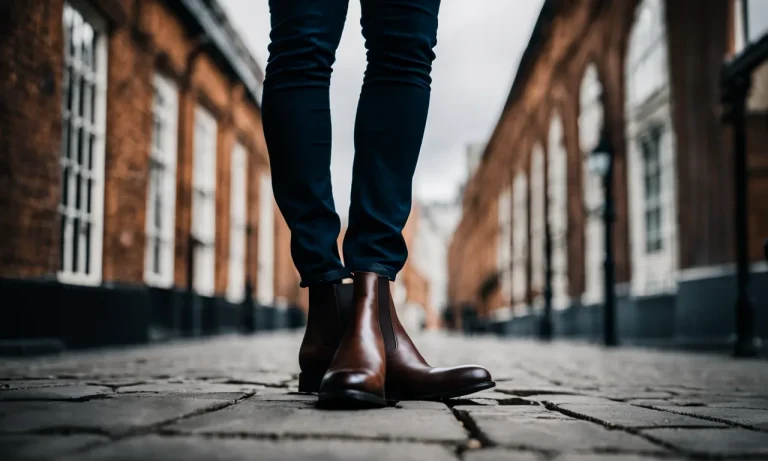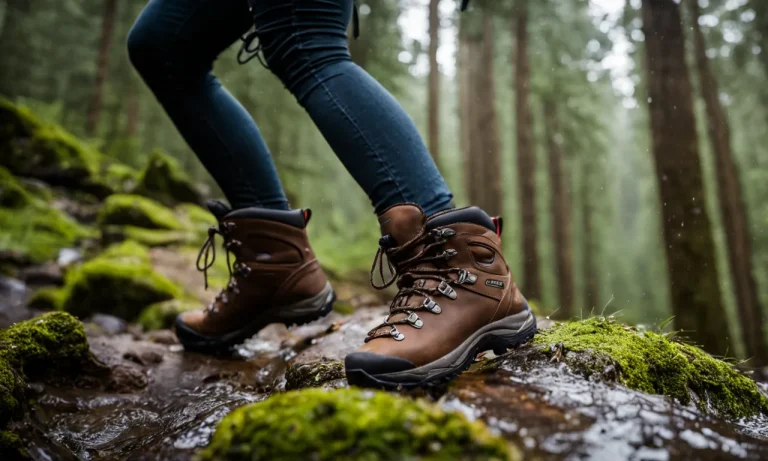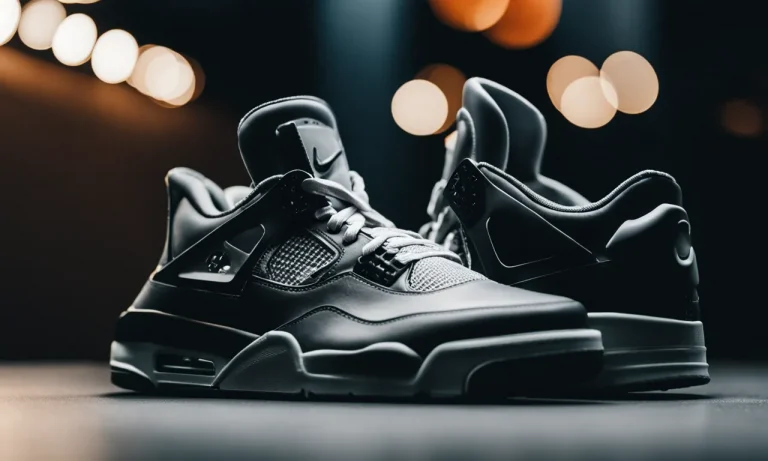For ballerinas, the ritual of preparing pointe shoes before class or performance is akin to a sacred ceremony. These satin slippers play a critical role in enabling dancers to balance atop their toes, a feat requiring strength, artistry and some hidden secrets inside the shoes.
If you’re short on time, here’s a quick answer to what’s inside pointe shoes: Toe pads, shank, box, insole, pleats and glue hold the structure together. Read on for details on each component and how they create the support and shape dancers rely on.
This article will provide a comprehensive look inside pointe shoes, examining the key structural elements that allow ballerinas to seemingly defy gravity and explaining how dancers prepare the shoes to custom fit their feet.
The Hard Shank Provides Rigidity
One of the key elements that make pointe shoes so unique is the hard shank. The shank is the part of the shoe that provides rigidity and support to the dancer’s foot. Without the shank, dancers would not be able to perform the graceful and daring movements that are characteristic of ballet.
Made of Paper, Fiberglass or Plastic
The shank of a pointe shoe is typically made of either paper, fiberglass, or plastic. Each material has its own unique characteristics and benefits. Paper shanks are often preferred by dancers who prefer a more flexible shoe, while fiberglass and plastic shanks offer more stability and support.
For example, paper shanks allow for greater articulation of the foot, making it easier for dancers to achieve a beautiful arch. On the other hand, fiberglass and plastic shanks provide a sturdier base, allowing dancers to maintain their balance and perform more intricate movements.
Runs Length of Shoe’s Sole
The shank of a pointe shoe runs the entire length of the shoe’s sole, from the heel to the tip of the toes. This ensures that the dancer’s weight is evenly distributed and supported throughout the foot.
It also helps to prevent the shoe from bending or collapsing under the pressure of the dancer’s body weight.
Allows Dancer to Balance En Pointe
The primary function of the shank is to enable dancers to balance en pointe, or on the tips of their toes. When a dancer rises onto the tips of their pointe shoes, the shank helps to distribute their weight evenly, allowing them to maintain their balance and perform movements with grace and precision.
Without the rigid support provided by the shank, dancers would not be able to achieve the stunning visual effect of being seemingly weightless as they glide across the stage. The shank plays a crucial role in allowing dancers to execute the challenging and awe-inspiring movements that make ballet so captivating to watch.
For more detailed information on ballet pointe shoes and the role of the shank, you can visit the website of the American Ballet Theatre at https://www.abt.org/ballet-dictionary/.
The Box Houses the Toes
One of the most important components of a pointe shoe is the box, which is designed to house and support the dancer’s toes. The box is located at the front of the shoe, where the toes are inserted. It is typically made of layers of sturdy materials, such as cardboard, paste, and fabric, that are molded into a shape that conforms to the dancer’s foot.
Fabric-Covered Tip of the Shoe
The tip of the pointe shoe, also known as the vamp, is covered in fabric to provide a smooth surface for the dancer’s toes. This fabric is often made of satin or canvas, which helps to reduce friction and allow the dancer to glide across the floor with ease.
The fabric is carefully stitched onto the shoe to ensure durability and flexibility.
Padding and Platform Support Toes
To provide additional support and cushioning for the toes, pointe shoes are equipped with padding inside the box. This padding helps to distribute the weight and pressure evenly, reducing the risk of injury.
The platform, which is the flat surface at the front of the shoe, also plays a crucial role in supporting the toes. It provides a stable base for the dancer to stand on while en pointe.
Comes in Different Profiles
Pointe shoes come in a variety of profiles to accommodate different foot shapes and sizes. The profile refers to the shape of the box and the vamp. Some dancers may have a narrow foot and require a shoe with a tapered box, while others may have a wider foot and need a shoe with a broader box.
The choice of profile is crucial to ensure a proper fit and support for the dancer’s feet.
For more information on pointe shoes and ballet footwear, you can visit Pointe Magazine. They provide detailed articles and resources for dancers of all levels.
Glue Holds It All Together
When it comes to pointe shoes, glue plays a crucial role in keeping everything in place. From securing the sole to the shank to attaching the shank to the box, glue is the unsung hero that ensures dancers can perform their art with grace and precision.
Glue the Sole to the Shank
The first step in constructing a pointe shoe involves gluing the sole to the shank. The sole, which is typically made of leather, provides support and stability for the dancer’s foot. The shank, on the other hand, is a rigid strip of material, often made of cardboard or plastic, that runs along the bottom of the shoe.
It helps to distribute the dancer’s weight evenly and provides additional support.
The glue used in this process is specially formulated to withstand the rigorous demands of ballet. It must be strong enough to hold the sole and shank together securely, yet flexible enough to allow for movement and articulation of the foot.
The skillful application of the glue ensures that the sole and shank become one cohesive unit, providing a solid foundation for the dancer.
Glue the Shank to the Box
Once the sole and shank are securely attached, the next step is to glue the shank to the box. The box, which is the front part of the shoe, encases the dancer’s toes and provides support for the en pointe position.
It is typically made of layers of fabric and paste, creating a structure that can withstand the pressure and weight placed on it during performances.
The glue used in this step is carefully applied to ensure a strong bond between the shank and the box. It is essential that the glue is evenly distributed, as any inconsistencies could lead to discomfort or instability for the dancer.
The careful craftsmanship and attention to detail in this process ensure that the pointe shoe is not only functional but also comfortable for the dancer.
Dancers Add More Glue for Customization
While the initial gluing process is essential for the construction of a pointe shoe, dancers often customize their shoes by adding more glue. This additional glue helps to reinforce certain areas of the shoe that may require extra support or padding.
For example, dancers may apply extra glue to the tips of the pointe shoes to provide additional cushioning and protect their toes. They may also add glue to the sides of the shoes to create a snugger fit or to prevent the shoes from slipping off during intense movement.
This customization allows dancers to fine-tune their shoes to their individual needs and preferences, enhancing their comfort and performance on stage. The careful application of additional glue demonstrates the meticulous nature of ballet dancers and their dedication to perfecting their craft.
The Insole Cushions the Foot
Inside a pointe shoe, the insole plays a crucial role in providing comfort and support to the dancer’s foot. It acts as a cushion between the foot and the hard base of the shoe, helping to absorb shock and reduce pressure on the toes and metatarsal bones.
Thin Layer of Padding
The insole of a pointe shoe is typically made of a thin layer of padding, often made from materials such as foam or felt. This padding helps to provide some cushioning and support, without compromising the dancer’s ability to feel the floor beneath them.
The thinness of the padding allows the dancer to maintain a strong connection with the floor, which is essential for balance and stability.
Often Removed for Custom Fitting
While the insole is an integral part of a pointe shoe, it is not always a one-size-fits-all solution. Many dancers choose to remove the original insole and replace it with one that is customized to their individual needs.
This allows for a more personalized fit and can help address specific foot issues or provide additional support where needed.
Replaced with Toe Pads
In addition to customizing the insole, dancers often replace it with toe pads for added comfort and protection. Toe pads are small cushions that are placed at the front of the shoe, under the dancer’s toes. They help to alleviate pressure and reduce the risk of blisters and other foot injuries.
There are various types of toe pads available, ranging from gel pads to lambswool, allowing dancers to find the perfect level of cushioning for their feet.
For more information on pointe shoes and ballet footwear, you can visit www.danceinforma.com.au or www.dancewearsolutions.com.
Pleats Give the Shoe Flexibility
One of the key features that give pointe shoes their unique flexibility is the pleats. These fabric folds are strategically placed at the back of the shoe, allowing it to bend with the dancer’s foot. The pleats act as a hinge, enabling the dancer to point their foot and create those beautiful lines that are characteristic of ballet.
Fabric Folds at the Back of the Shoe
The pleats are made by folding the fabric at the back of the shoe. This creates extra material that can be flexed and manipulated as the dancer moves. The folds are carefully sewn in place to ensure that they provide the right amount of flexibility without compromising the shoe’s strength and structure.
Allows the Shoe to Bend with the Foot
When a dancer goes on pointe, their foot is fully extended and the weight is placed on the tip of the shoe. Without the pleats, the shoe would be rigid and incapable of bending with the foot. The pleats allow the shoe to conform to the shape of the foot, providing a comfortable fit while still providing support and stability.
Size of Pleats Varies
The size and number of pleats can vary depending on the brand and model of the pointe shoe. Some shoes may have larger pleats, allowing for more flexibility, while others may have smaller pleats for a firmer fit.
Dancers often experiment with different styles to find the shoe that best suits their needs and preferences.
Conclusion
An incredible amount of engineering goes into the design of pointe shoes, evolving over decades to support dancers as they push the limits of balance and athleticism. But technical elements alone don’t make the magic happen – a dancer’s skill and artistry transform these satin slippers into an instrument for creating breathtaking spectacle.
So while pointe shoes enable dancers to perform awe-inspiring feats, it’s the ballerinas themselves that truly soar.






